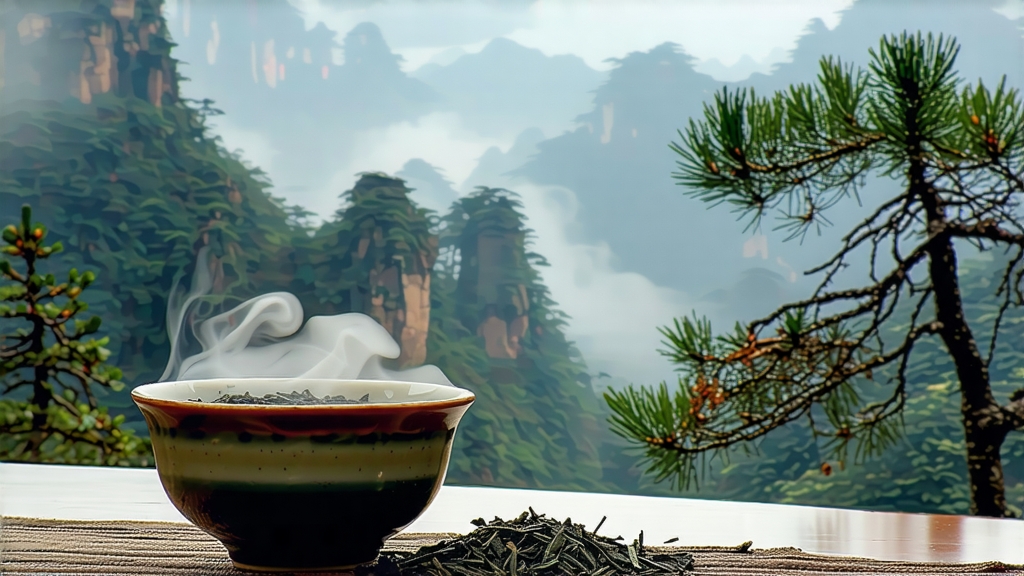
Long before English tea clippers raced across the oceans and Victorian drawing rooms echoed with the clink of bone-china cups, a small village deep in China’s Wuyi Mountains was already perfuming its tea with pinewood smoke. That village—Tongmu—gave the world its first fully oxidised black tea, the one we now call Lapsang Souchong. To international drinkers the name evokes campfire mystique; to Chinese growers it is zhengshan xiaozhong—“small-leaf variety from the original mountain”—a protected origin whose history, craft and flavour arc from imperial tribute to modern connoisseurship.
History: From Ming Soldiers to London Parlours
Local lore fixes the birth year at 1567, late Ming dynasty, when passing soldiers commandeered fresh leaf and hurried the drying over available pine fires. The accidental smoke married so well with the tea’s natural sweetness that villagers repeated the process, refining it into a deliberate technique. By 1604 Dutch traders had ferried the novel “bohea” (Wuyi) tea to Europe; Catherine of Braganza’s 1662 dowry chest carried it to the English court, and the British East India Company listed “Lapsang” in its 1689 Canton ledgers. Thus a Chinese mountain curiosity became the prototype for every black tea the West would later adore—Keemun, Assam, Ceylon—all genetic and stylistic descendants of Tongmu’s pine-scented leaf.
Terroir: Why Only Tongmu Is “Original”
The Wuyi range is a 60-kilometre arc of weathered granite cliffs, humid ravines and mineral-rich soils derived from volcanic tuff. Within this UNESCO geopark the 48 km² Tongmu Guan (Tongmu Pass) micro-zone is further shielded by evergreen forests that exude resins into the air. Diurnal swings of 15 °C, year-round fog and the pristine Jiuqu (Nine-Bend) River create a slow, tender growth cycle. Only the indigenous xiaozhong cultivar—small, thick leaves that flush later than neighbouring gardens—can translate that terroir into honeyed, longan-like sweetness sturdy enough to balance smoke. Chinese law now restricts the genuine “zhengshan” designation to leaf picked and processed inside this 600-year-old village core; everything else is “waishan,” outside-mountain imitation.
Leaf Grades: From Souchong to Bohea Fannings
Traditional grading follows leaf size and pluck position. The choicest grade, simply called Lapsang Souchong, uses the second leaf below the bud, plucked when three leaves are open. One-leaf-and-a-bud becomes “Bohea Pekoe,” while larger third and fourth leaves become “Bohea Souchong.” Broken grades destined for Russian samovars are “Bohea Fannings.” Modern specialty market further separates smoked and unsmoked styles: the unsmoked “zhengshan xiaozhong” is dried only over charcoal embers without pine, yielding a cacao-wine cup that lets terroir speak; the classic “smoked” version is what most outsiders recognise by its evocative campfire nose.
Craft: Where Fire Meets Flesh
Plucking begins after Qingming festival when mountain mornings still bite with chill. Leaves are withered on bamboo slats set inside wooden “qinglang” sheds warmed solely by gentle charcoal heat below the floor. Once 65 % moisture is lost—judged by the rustle of a squeezed handful—workers roll the leaf for 45 minutes, bruising cells to release enzymes that will oxidise catechins into theaflavins and thearubigins. Oxidation occurs in deep fir boxes lined with wet cloth; every 20 minutes the tea is tossed to aerate, a ritual repeated for three hours until the leaf turns chestnut-brown and exudes a malty bouquet.
The decisive smoking follows. Fresh pinewood—preferably 30-year-old Masson pine rich in resin—is split into 5 cm strips, stacked into a pit below a brick chamber, and ignited so that flames die quickly into a slow smoulder. A second layer of semi-damp pine needles moderates temperature to 28–32 °C, cool enough to dry without baking. Screens of woven bamboo hold the oxidised leaf 1.5 metres above the smoke for six to eight hours, interrupted every 60 minutes for gentle turning. Masters gauge readiness by pinching the stem: it should